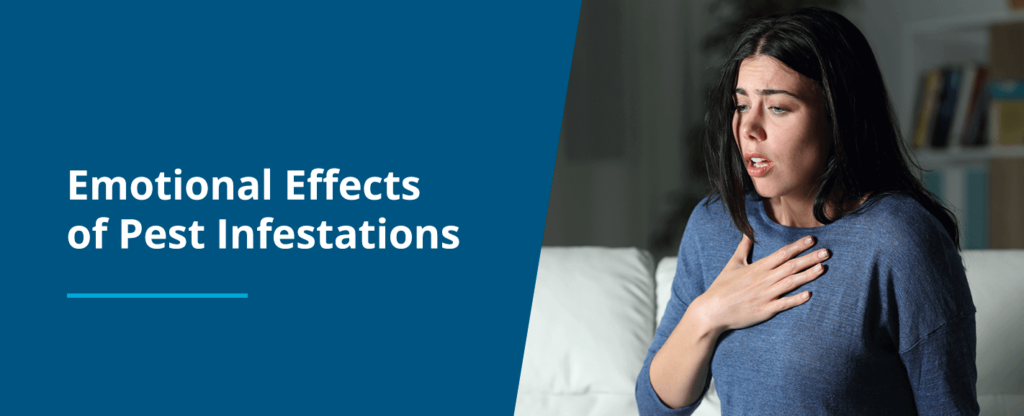Our Eco Bed Bug Exterminators Dc Statements
Our Eco Bed Bug Exterminators Dc Statements
Blog Article
All about Eco Bed Bug Exterminators Dc
Table of ContentsGet This Report about Eco Bed Bug Exterminators DcEco Bed Bug Exterminators Dc for DummiesThe Ultimate Guide To Eco Bed Bug Exterminators DcEco Bed Bug Exterminators Dc Fundamentals ExplainedEco Bed Bug Exterminators Dc - The Facts
Due to the fact that pesticides are poisonous, they are also potentially hazardous to humans, animals, other microorganisms, and the environment. Therefore, people who utilize chemicals or consistently can be found in contact with them need to comprehend the family member poisoning, potential wellness impacts, and preventative measures to decrease exposure to the products they utilize. Risk, or risk, of making use of chemicals is the possibility for injury, or the degree of risk included in utilizing a chemical under a given set of conditions.
Applicators can lessen or almost eliminate exposure-- and therefore minimize risk-- by following the label guidelines, utilizing personal safety apparel and devices (PPE), and handling the chemical correctly. More than 95 percent of all pesticide exposures come from dermal direct exposure, primarily to the hands and forearms. By using a set of unlined, chemical-resistant handwear covers, this sort of direct exposure can be virtually removed.
The harmful results that occur from a single direct exposure by any kind of route of access are labelled "intense results." The four routes of direct exposure are facial (skin), inhalation (lungs), dental (mouth), and the eyes. Intense poisoning is established by analyzing the facial toxicity, inhalation toxicity, and dental toxicity of examination animals.
Some Of Eco Bed Bug Exterminators Dc
Acute toxicity is gauged as the amount or concentration of a toxicant-- the a.i.-- called for to kill half of the pets in a test population. This procedure is usually expressed as the LD50 (lethal dose 50) or the LC50 (dangerous concentration 50). In addition, the LD50 and LC50 worths are based on a single dosage and are tape-recorded in milligrams of pesticide per kg of body weight (mg/kg) of the guinea pig or partially per million (ppm).
The lower the LD50 or LC50 value of a pesticide product, the greater its toxicity to humans and animals. Pesticides with a high LD50 are the least harmful to people if made use of according to the instructions on the product tag. The persistent toxicity of a pesticide is identified by subjecting guinea pig to long-lasting direct exposure to the energetic component.
The persistent poisoning of a chemical is a lot more tough than severe toxicity to establish with research laboratory analysis. Products are categorized on the basis of their family member severe poisoning (their LD50 or LC50 worths). Chemicals that are identified as highly poisonous (Poisoning Category I) on the basis of either dental, dermal, or inhalation toxicity must have the signal words threat and poisonous substance published in red with a head and crossbones icon plainly presented on the front panel of the bundle label.
The severe (solitary dose) oral LD50 for pesticide products in this group ranges from a trace quantity to 50 mg/kg. As an example, direct exposure of a few declines of a material taken orally could be fatal to a 150-pound person. Some chemical products have just the signal word risk, which tells you nothing about the acute toxicity, simply that the item can trigger severe eye damages or serious skin irritation
All about Eco Bed Bug Exterminators Dc
In this category, the intense dental LD50 varieties from 50 to 500 mg/kg. A teaspoon to an ounce of this product might be deadly to a 150-pound person (bed bug spray). Pesticide items identified as either somewhat harmful or relatively harmless (Poisoning Classifications III and IV) are required to have the signal word CAUTION on the pesticide tag

All pesticide toxicity values, including the LD50, can be found on the product's Material Safety Product Sheet InformationMSDS). Chemical labels and MSDS can be obtained from retailers or manufactures - https://slides.com/ecobedbug3xt. The signs and symptoms of chemical poisoning can vary from a mild skin inflammation to coma or even death.
Individuals likewise vary in their level of sensitivity to various degrees of these chemicals. Some individuals may show no response to a direct exposure that might create serious health problem in others (exterminator). Because of potential health and wellness concerns, pesticide customers and trainers should recognize the typical symptoms and signs of chemical poisoning. The effects, or symptoms, of chemical poisoning can be generally specified as either topical or systemic.
An Unbiased View of Eco Bed Bug Exterminators Dc
Dermatitis, or swelling of the skin, is accepted as the most frequently reported topical result linked with chemical direct exposure. Some people tend to cough, wheeze, or sneeze when revealed to pesticide sprays.
This sign typically subsides within a few minutes after an individual is gotten rid of from the direct exposure to the toxic irritant. Nonetheless, a response to a pesticide product that causes someone not only to sneeze and cough but also to develop extreme acute respiratory signs more information and symptoms is more likely to be a real hypersensitivity or sensitive reaction.
Systemic results are rather various from topical effects. They usually take place away from the original point of get in touch with as a result of the pesticide being taken in right into and dispersed throughout the body.
Report this page